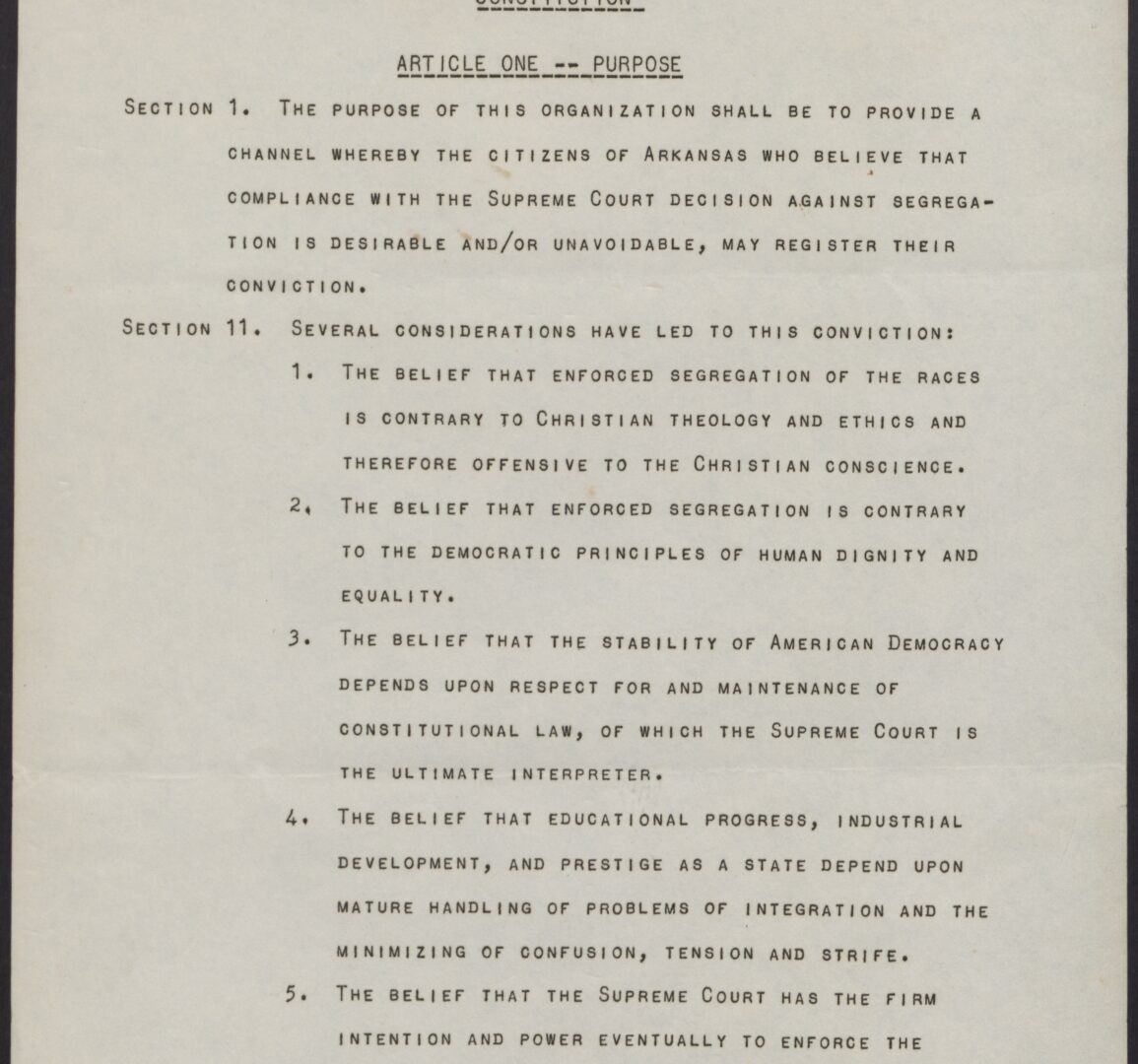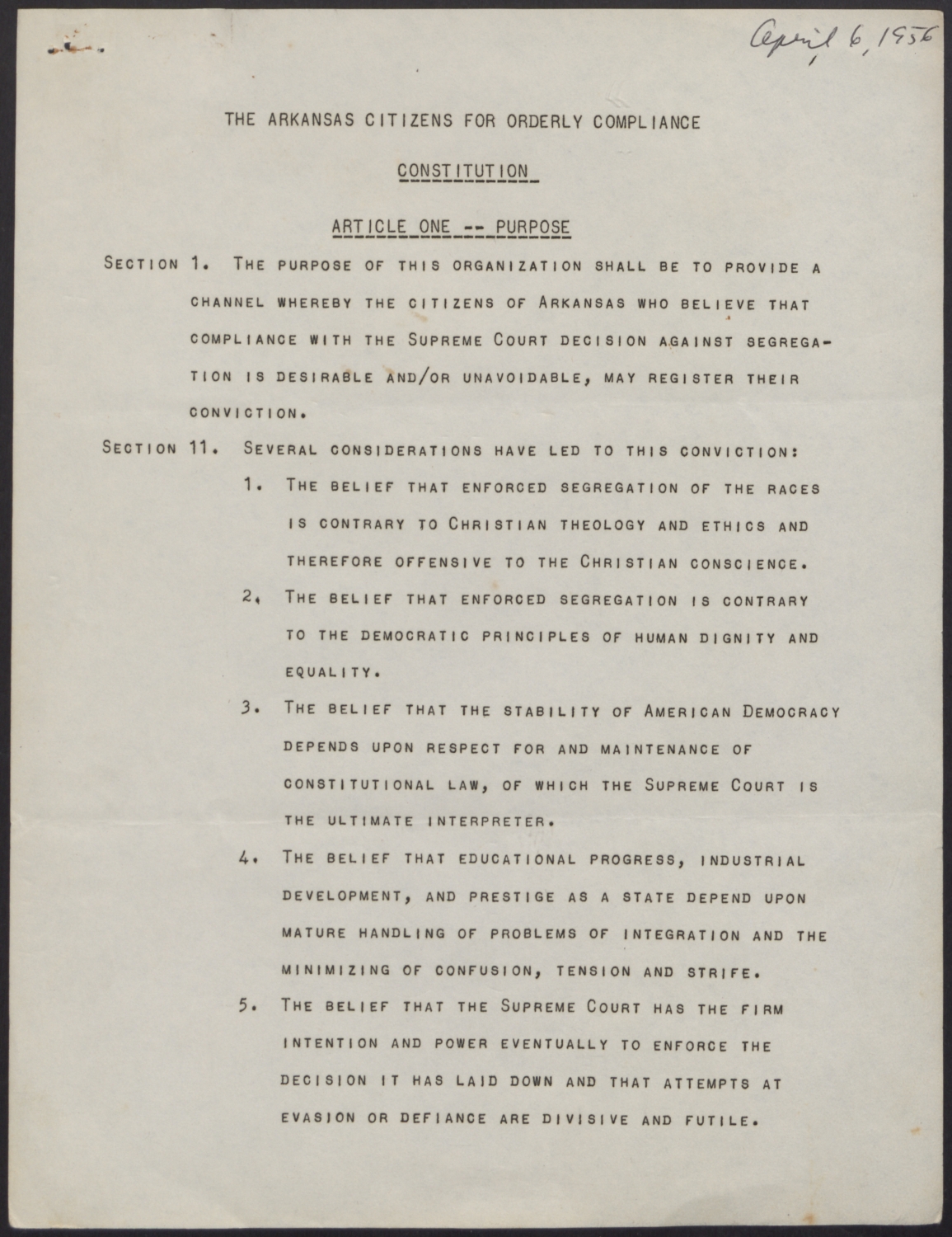Introduction
In 1954, nearly a century after the formal abolition of slavery in the United States, Brown v. Board of Education of Topeka, one of the most important Supreme Court decisions in US history, declared that segregation in public schools was unconstitutional. The decision partially overturned Plessy v. Ferguson, which in 1896 established the “separate but equal” doctrine. Under the doctrine, segregated facilities for black and white Americans were legal if they offered services of the same or comparable quality. In reality, Plessy v. Ferguson confirmed the long-standing practice of discrimination against black Americans. It argued that while the US Constitution protected equal political and civil rights for black and white Americans, it did not ensure equal “social rights.”
Brown v. Board of Education was a momentous victory for civil rights activists and all black Americans. Simultaneously, many white Americans, particularly in the South, were outraged and ready to block integration efforts. The battle for equal and just access to education was far from over. It was now also additionally complicated by the Supreme Court’s choice not to provide any specific guidelines on when and how desegregation of public education should take place. In response, individuals who supported the Supreme Court decision engaged in a variety of strategies that promoted the cause of integration.
In this activity, you will examine the constitution of the Arkansas Citizens for Orderly Compliance, a civil society organization that consisted of black and white religious and secular leaders created to fight against segregation and push for timely and orderly integration in Arkansas. The Arkansas Citizens for Orderly Compliance raises the crucial question of why we need civil society organizations that fight for causes that are already protected by existing laws? In other words, why did some Arkansans believe that they needed to establish an anti-segregation organization if segregation had already been declared unconstitutional by the highest court of the land?
Activity Questions
Speeches, excerpts, and bulletins by ministers and laypeople, page 24
- What is this document and what organization issued it?
- What is the purpose of the organization that issued this document? Explain in your own words.
- What principles (beliefs) do the authors of this document cite to oppose segregation?
- Do the authors of this document demand immediate integration?
- Who can become a member of this organization?
- How would you characterize the approach of the Arkansas Citizens for Orderly Compliance to integration? What does the organization’s name tell us about their approach? What do you think about their decision not to demand immediate integration?
- Why do you think the Arkansas Citizens for Orderly Compliance was created in 1956, two years after the Brown v. Board of Education decision? Why would it be important to have this kind of organization if the Supreme Court had already decided that segregation was unconstitutional in the United States?
- The existence of organizations like the Arkansas Citizens for Orderly Compliance shows that the law itself is not sufficient to change deeply rooted practices and beliefs. Although segregation had already been declared unconstitutional, some Arkansas activists recognized that they had to organize to promote and enforce the cause of integration. What are some of the causes that face similar challenges today? What activities or practices that are illegal today are also very common and, like segregation in the past, undermining the notions of equality and social justice?
- Do you know of any civil society organizations that advocate enforcing the existing laws in order to promote social justice?
Primary Sources
To learn more about the primary sources featured in the activities above, click the following links:
Arkansas Social Studies Standards
US History Since 1890, Grades 9 – 12
- Strand: Era 9: Post-war United States 1945 to Early 1970s
- Content Standard 5: Students will analyze social, economic, and political changes in the United States between 1945 and 1970.
- Era9.6.USH.1 Analyze the roles of individuals, groups, and the government in securing civil rights during the mid-20th century using a variety of primary and secondary sources (e.g., minorities, women, NAACP, federal court cases, legislation, Twenty-fourth Amendment)
- Era9.6.USH.4 Examine domestic policies of the federal government between 1945 and 1970 and the outcomes from multiple perspectives (e.g., New Frontier, Great Society, civil rights, social issues)
- Era9.6.USH.5 Construct historical arguments of long-term effects of social and economic changes occurring during the mid-20th century using available data and multiple sources
African American History, Grades 9 – 12
- Strand: Illusion of Equality 1950-1970
- Content Standard 6: Students will analyze the African American experience from 1950-1970.
- IE.6.AAH.2 Examine the various influences of African Americans on social change using primary and secondary sources from multiple perspectives (e.g., migration, feminism, military, social organizations)
- IE.6.AAH.4 Analyze the effects of legislative developments on the African American experience between 1950-1970 (e.g., voting, civil rights, fair housing, education, employment, affirmative action)
Arkansas History, Grades 7 – 8
- Strand: History Content Standard 7: Students will examine the impact of historical events and people on the development of Arkansas.
- H.7.AH.7-8.8 Analyze social, economic, and political effects of the Civil Rights Movement on various regions in Arkansas from multiple perspectives (e.g., integration, state legislation)
Arkansas History, Grades 9 -12
- Strand: Era 5: World War II Through the Civil Rights Era 1941-1967
- Content Standard 5: Students will analyze factors that influenced the perspectives of Arkansans from World War II through the Civil Rights Era.
- Era5.5.AH.9-12.4 Analyze the social, economic, and political effects of the Civil Rights Movement in various regions of Arkansas using primary and secondary sources from multiple perspectives (e.g., segregation; voting; integration of Fayetteville, Hoxie, and Little Rock School Districts; federal and state legislation)
Key Terms
More Information
- https://www.uscourts.gov/educational-resources/educational-activities/history-brown-v-board-education-re-enactment
- https://www.thirteen.org/wnet/supremecourt/rights/landmark_brown.html
- https://www.thirteen.org/wnet/supremecourt/antebellum/landmark_plessy.html
- https://justiceunbound.org/brown-v-board-the-little-rock-nine-and-presbyterian-public-witness/
Downloadable Guides and Handouts
We encourage K-12 educators to use History Alive: Virtually! in a way that will best match their classroom needs. The “Exercise” handout includes a complete exercise as featured on this website, the “Primary Sources” handout includes only primary sources used in the exercise, and the “Questions” handout includes analytical questions from the exercise but is editable and can be easily changed to best match students’ needs.
Civil Society and Law – Exercises


